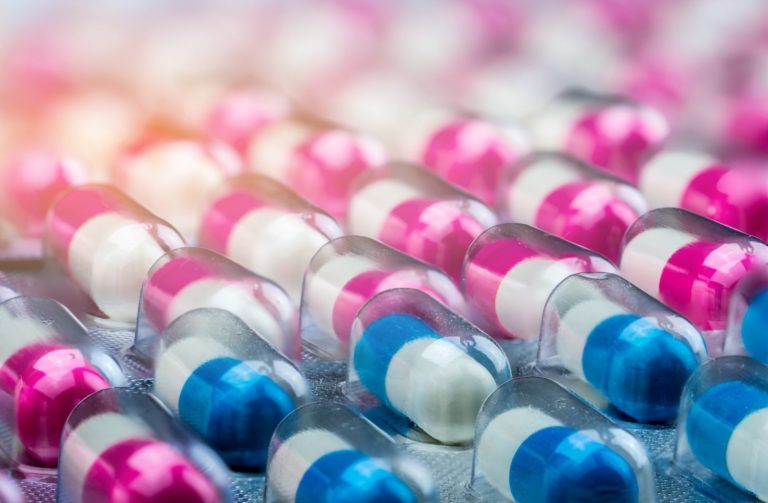International standards for pharmaceutical products
Since February 2019, the European Falsified Medicines Directive (FMD) requires laboratories and pharmacies to ensure the serialization of medicines. This involves setting up a system for verifying the authenticity of products, consisting of affixing a unique identifier to each box of medicines, which will then be recorded in a central database. The “traceability to the box” should make it possible to fight against counterfeiting and parallel markets.
To address global requirements on pharmaceutical serialization, we provide a country-by-country summary in a few summary pieces of information.
Focus and synthesis of international standards for pharmaceutical products from EU and non-EU countries
France and the EU countries have the same directives, sometimes application delays are granted to some countries. Other countries have their own rules. Laboratories and pharmaceutical industries, must know and apply these instructions when they want to offer their pharmaceutical products to such or such other country.
France and European Union countries
In these countries, it is Directive 2011/62 / EU of the European Parliament and of the Council of 08 June 2001 on medicinal products for human use and the prevention of the entry into the legal supply chain of falsified medicinal products.
The text reiterates that the concept of “falsified medicine” must be distinguished from illegal medicines, and from products infringing on intellectual property rights.
In addition, the deadline for implementation of this directive on the serialization of medicines in the European Union was set for February 09, 2019; but it has been extended to February 09, 2025 for countries that did not have previous measures of box traceability: Belgium, Italy, and Greece.
Russia
Decree 1079 of July 23, 2020 on the approval of the regulation on the system of monitoring the flow of medicines for human use sets.
It can be noted that on the characteristics of the means of identification the procedure for its application and requirements for the structure and format of information contained in the means of identification the decree provides details on the procedures to be adopted :
- When the means of identification of the medicinal product is applied to the so-called secondary packaging (in the absence of a primary packaging)
- The information contained in the means of identification must be applied in the form of a 2D barcode on the production line by printing or labeling with a sticker that cannot be separated from the packaging.
- The information contained in the means of identification must have the following structure: characteristic of the Data Matrix symbols means a symbol having the code 232 in the table of ASCII symbols
Our software and software suites Pharmacim meet the characteristics required by Russia.
Argentina
In Argentina, it is ANMAT (National Administration of Drugs, Food and Technology) that regulates the operation of drug distribution companies and logistics operators. It issued the provision No. 7439/99 on the System of Traceability of Medicines to be implemented is governed by the provision 3683/2011 is managed by ANMAT
It should be noted that the laboratories holding the certificates of Registration of Medicinal Specialties (i.e. medicinal specialties, already registered or that will be registered in the future, and which contain in their composition the Active Pharmaceutical Ingredients -IFA-) must place in the packaging of each of the units to be sold to the public, a support or device with the capacity to store a unique code supervised and audited by ANMAT, according to the recommendations of the GS1 standard
For the USA, see the article on pharmaceutical serialization which focuses on the US standards.
Definition of serialization
The objective of serialization is to fight against the falsification of drugs.
To do this, each medicine case must be marked and traced (this is the traceability of medicines).
Thus, the drug case is given a “unique identifier”. As stated in COMMISSION REGULATION (EU) 2016/161 of October 2, 2015, published in the Official Journal of the European Union, this identifier is “a security feature to verify the authenticity of an individual box of a medicinal product and to identify it.”
The pharmaceutical industries must therefore equip themselves with the tools, software in order to respect the technical specificities of the unique identifier: composition of the unique identifier, the support of the unique identifier, the printing quality of the dimensional bar code, the human readable format, bar codes on the packaging and possibly additional information in the bar code, two-dimensional provided that it is authorized by the competent authority.
Therefore, these manufacturers need software suites and software for the pharmaceutical industry made by software publishers, specialists in the pharmaceutical sector like Courbon Software which offers the Pharmacim Suite.
Definition Pharmaceutical aggregation
The manufactured medicines are delivered to pharmacies, hospitals, or other services authorized to deliver them to the public.
For this purpose, the drugs that are in their case, must be put in a carton, and in pallets of cartons. And their conformity must be verified. Thus, the cartons and pallets of cartons must be marked and traced: this is the pharmaceutical aggregation.
The objective is to “associate”, “aggregate” the contents of the carton with the carton itself.
This makes it possible to be sure of the location of each case.
This action, like serialization, makes it possible to verify the authenticity of the drugs.
What is the difference between aggregation and serialization?
Serialization and aggregation are complementary and unchangeable procedures. After serialization, aggregation takes place.
For this, an efficient information system is necessary. In this respect, drug manufacturers need to equip themselves with complete track and trace software suites. One example is the Pharmacim LSM software suite, which includes several modules (software).
Specific modules according to the manufacturer’s needs will also be useful: the Pharmacim LSM Serial Number Manager software module, the LSM Line Control (execution engine) module suitable for marking management, serialization and aggregation at the line side, or the Pharmacim LSM Configuration software.



